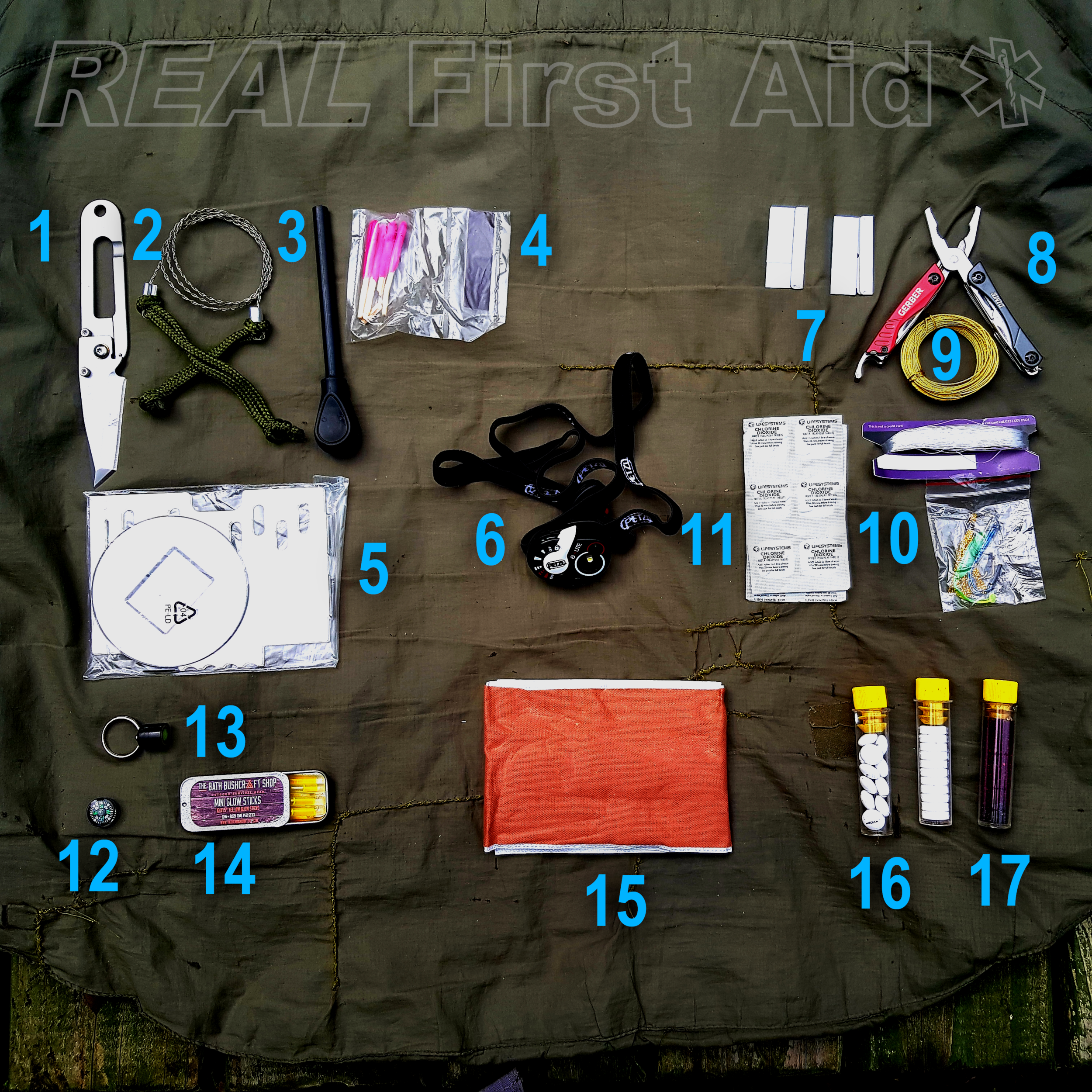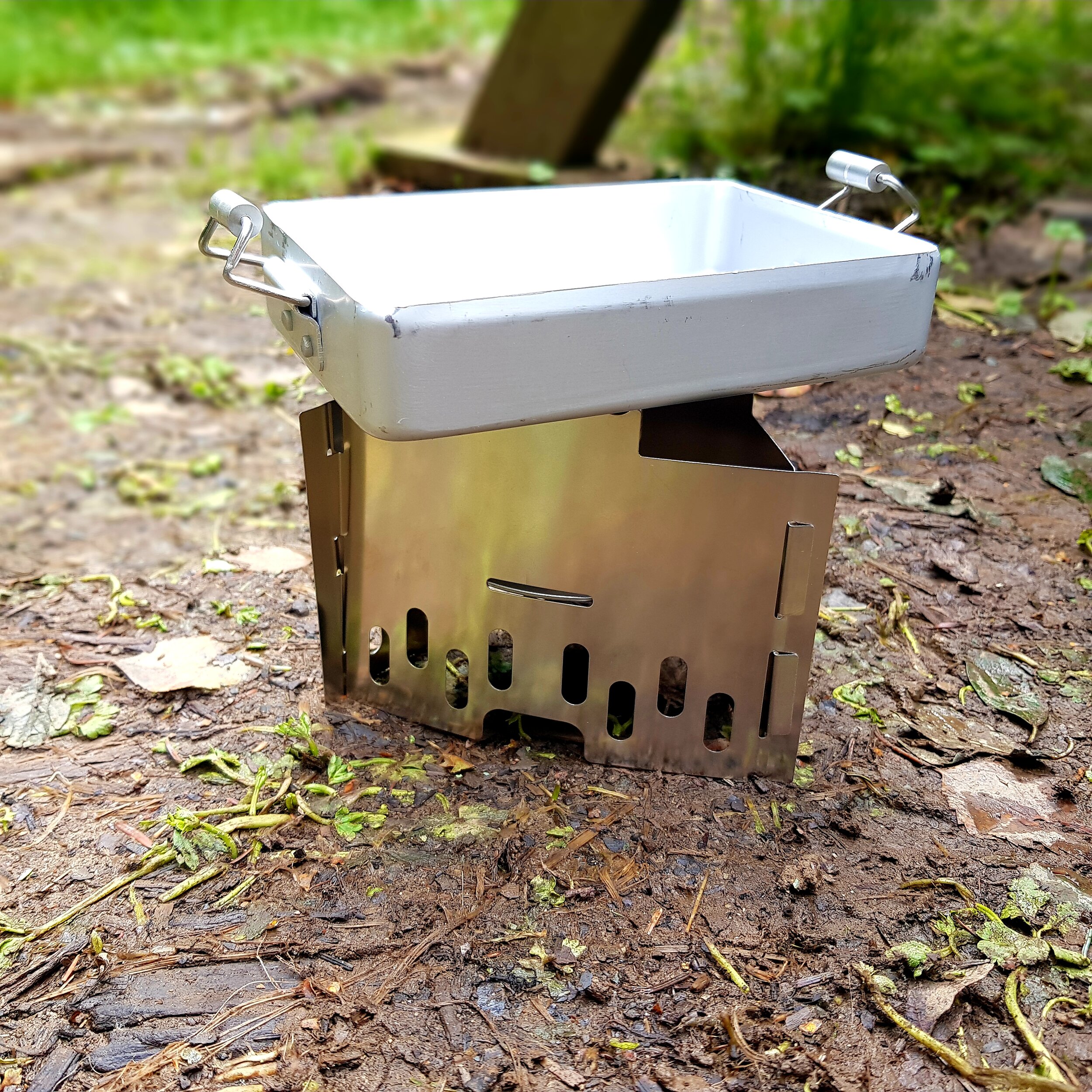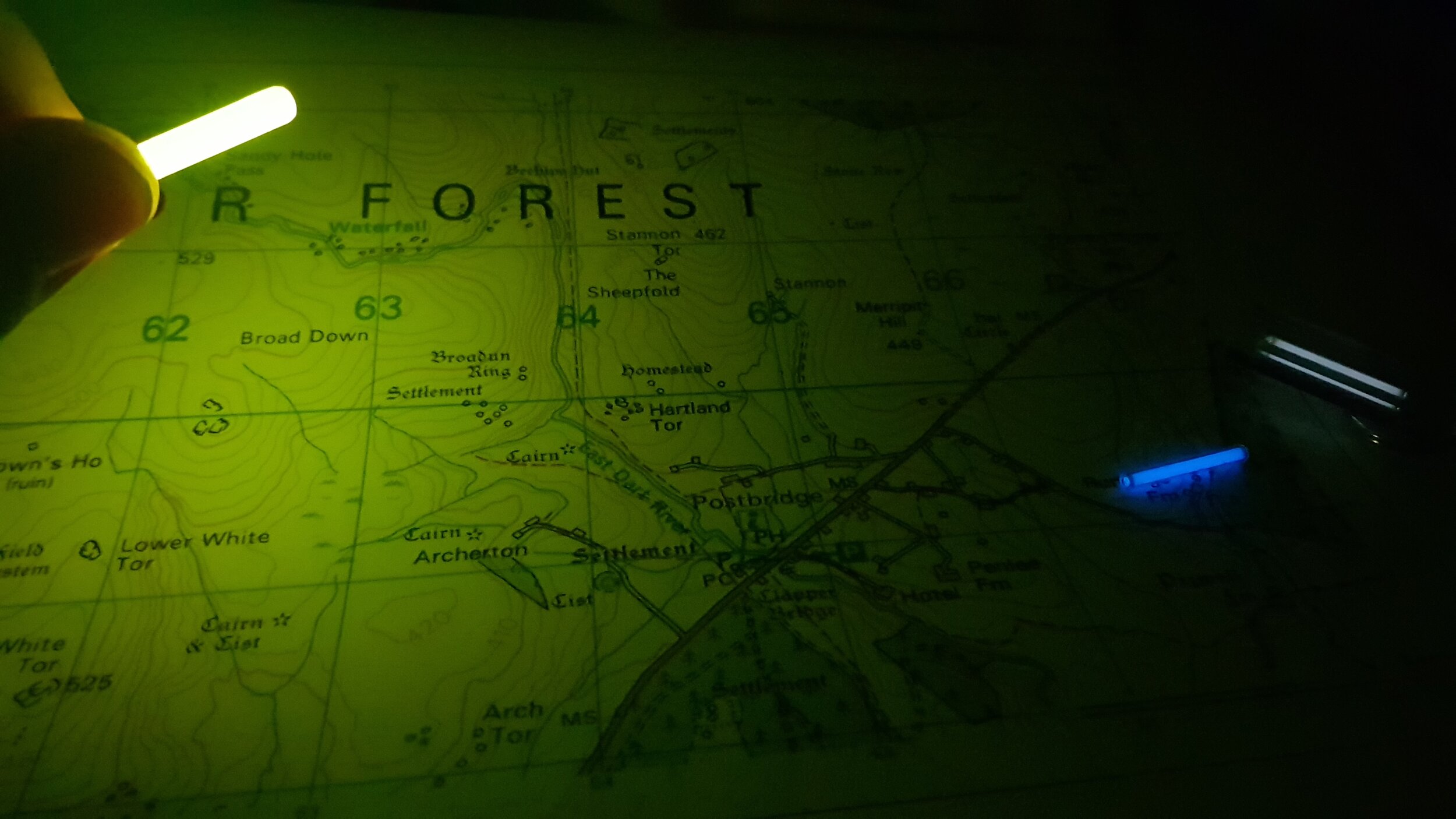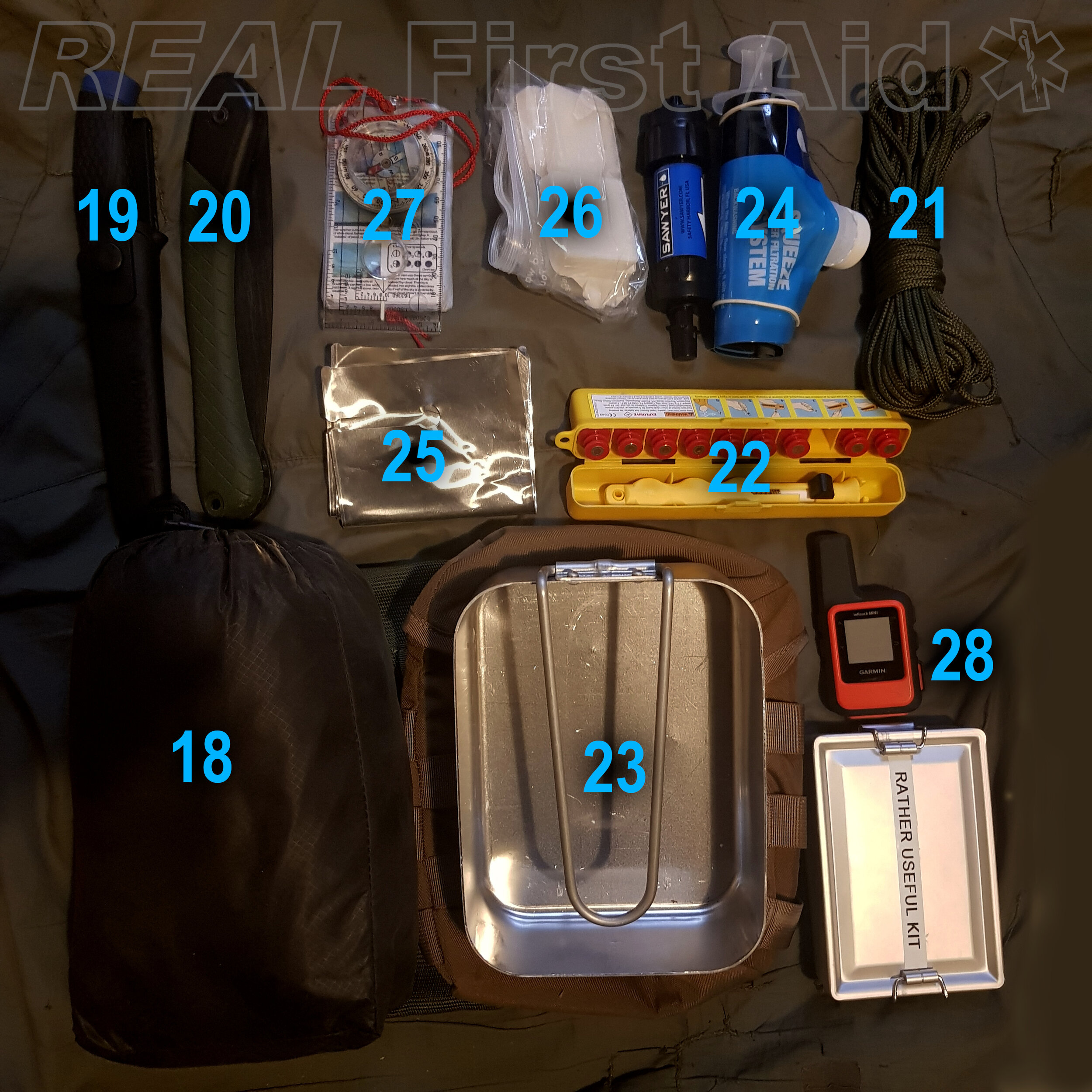Remote Survival Kits
22nd February 2021
Since the popularisation of survival kits due largely to Lofty Wiseman’s SAS Survival Handbook, first published in 1986, is there anything more to be said about Survival Kits?
The interweb is littered with countless examples of what should be in a Survival Kit – often utilising Wiseman’s tobacco tin template – ranging from the ultra-small prison wallet variety to larger, more comprehensive kits which challenge the original concept or a small, concealable container, and of course commercially available, survivalist celebrity endorsed models, some of which are little more than a toy set.
So what can this article contribute to an already burgeoning wealth of self-proclaimed expertise?
Technology has evolved.
A lot has changed since 1986; there was no mention of multi-tools or micro torches. Instead, most teenagers who received the SAS Survival Handbook for Christmas ‘86 spent a good part of January ‘87 trying to find out what on earth a ‘beta-light’ was and where they could get one without the internet for help.
It is really NOT a survival kit.
In almost every career or pursuit, it is not about the kit: If you head ill-prepared into any wilderness environment armed only with the clothes you are wearing and a ‘Survival Kit’ you will probably die in the short term of dehydration, heat illness or hypothermia or be killed by animals, insects or hostile locals. If you can survive that you will probably die of poisoning (from eating something you shouldn’t due to either lack of education and desperation) or slow painful death following infection.
History is littered with unfortunate cases of those who become lost, injured or isolated in remote environments – including highly trained, proficient members of Special Force.
Those who survive are newsworthy because they are so rare.
Kit forms the top, very narrow, echelon of competence which makes life easier and allows us to achieve more but built upon solid, broad tier of skills and below that a deeply rooted and continually revisited foundation of knowledge.The term Survival Kit is rather disingenuous for most people who do not have the knowledge, skills and understanding of how to operate in remote environment.
For the majority of us, it is a Rather Useful Kit.
It sits in our rucksack, rarely used, save for the occasional plaster or matches. Because we have done all that we can to prevent ourselves from being an a survival situation in the first place.
But accidents and unforeseen circumstances do occur so there is always milage in planning for contingencies. So the Rather Useful Kit should not be dismissed entirely.
They really are, rather useful.
The Container
The container should be small, waterproof and durable. It is hard to beat the original tobacco tin…if you can find one. There is a fashion for using smaller containers such as an Altoids mint tin which seems to be a competition amongst survivalists about who can pack as many different items into a small container without thought of need or practical application. The BCB Mini Mess Box is a great alternative.
Whichever you choose, a metal container is preferable as it can be used above a flame to boil water for drinking or sterilising equipment and the interior of the lid can be polished to use as a heliograph. Multi-functionality is a core concept of any Rather Useful Kit; where space is limited, each item should have multiple uses.
Contents
Unlike the contents of a medic bag, climbing rack or duty gear which are based on a Needs Assessment for each scenario, the Rather Useful kit is designed to be utilised in any environment or scenario in a remote setting.
PLAN-M is a dated military acronym but still wholly appropriate for identifying one’s needs in a survival situation. We supplement this with C for Communications
P – Protection – From the environment. Constructing a shelter, concealment and fire-lighting, for example.
L – Location – Means of being seen and able to identify your location.
A – Acquisition – Sourcing food, water and building materials. Constructing basic tools.
N – Navigation – The ability to identify your current location, plan a route to a chosen location and navigate along that route.
M – Medical – Being able to deal with injuries and illnesses with limited resources.
C – Communication – Methods of communicating your situation, location and needs.
In exactly the same way that your Medic Bag should be built around your (C)ABCDE or MARCH Procedure, your Rather Useful Kit should be built around PLAN-MC
Protection
1. A Compact Knife
Blades have come a long way since 1986. One of the best, compact knives which is actually usable is the CRTK KISS. This is available with a standard point or Tanto point (pictured) which is a bit more durable for harder working at the expense of precision. Both models are available as straight-edged or a combination of straight/serrated. Whilst serrated edges serve a purpose, they are notoriously difficult to sharpen, even with dedicated tools where as a straight edge can be maintained to a usable standard with a flat stone and enough patience.
A cheaper alternative would be a folding Stanley blade which can be picked up in any DIY centre for less than £5 and a selection of spare blades. Whilst not as well suited to harder work or managing larger timber, they are a lot easier to use than attempting to fashion your own knife out of bone and bark.
The Iain Sinclair Credit Card Knife (pictured) folds down to a diminutive size, barely thicker than two credit cards its merit is purely its size but in reality it is limited to being a handy knife to have in your wallet for opening Amazon parcels.
(L-R) CRTK KISS, Stanley folding utility knife, Iain Sinclair Credit Card knife, single edged razor blade.
2. Wire Saw
A standard in all Survival Kits; these wire saws make short work of branches for firewood or shelter building and for their size, weight and cost you could even argue the case for having two.
Replacing the ‘Key Ring’ handles with paracord makes them more comfortable to use. They can also be extended with more cord to cut branches high above head height.
Hacksaw Blade (not shown)
A hacksaw blade adds another option for cutting more dense material such as bone or wire. A cut-down length can be added to the kit with negligible difference due to its small size and low weight.
3. Ferrocerium rod
Ferrocerium is a synthetic pyrophoric alloy that produces hot sparks, far more effectively and reliably than the flint and magnesium fire starters of the olden days. Buy the largest one that will fit in your container as they are so much easier to handle while striking and produce more sparks from one long stroke rather than fiddling with an inch-long scrap of ferro rod in an attempt to save weight.
You do not need to include the striker which will take up valuable space, simply use the back of one of your blades.
4. Windproof matches
Lighting a fire with a ferro rod is satisfying but always, always, have more than one means of ignition. These are limited supply so to be used only when required.
Esbit folding stove with BCB Mini Mess Box
5. Folding Stove
The UK military issue hexamine stove is still a staple ‘back-up’ for many but the Esbit folding stove is so compact it can fit inside the Rather Useful Kit. Being able to build and start a fire is a basic skill but in a resource-poor environment or when time is limited, the folding stove and your container should enable you to boil a small amount of water in a couple of minutes.
Alternatively, just include three or four long nails to suspend your container above a flame on the ground.
Location
6. Head Torch
The Petzl E-lite is one of the smallest, versatile head torches on the market which includes red-light to preserve night vision and a strobe functioning for signalling.
Rather than including a heliograph, polish the inside lid of your container to a mirror-like finish.
Acquisition
7. Razor Blade
Used for fine work such as filleting fish, skinning animals or clothing and kit repairs. Rather than the traditional double-sided variety used in razors, look for a single-sided razor blade with an edge protector on the unused side.
8. Mini Multitool
These were not available for Wiseman and his chums but quality mini multitools such as the Gerber Dime or Leatherman Squirt are surprisingly useable and really come to play when dealing with brass wire for the construction of snares and improvised tools.
9. Brass wire
Brass is the material of choice being rust-resistant but easier to work with than steel wire. It has a multitude of uses from creating snares (which are illegal in the UK) to running repairs on kit and equipment.
10. Fishing kit
This is included for posterity. A few hooks and lures and some line wrapped around a cut-down credit card takes up a reasonable amount of space in the Rather Useful Kit. There is no need to add floats that can be easily made from wood or weights which can be stones. Fishing for survival is a long, slow game of patience…especially if the water source you are fishing from does not have any fish in it.
11. Water Purification Tablets
Chlorine Dioxide is more than twice as effective as traditional chlorine tablets or ‘Puritabs’ and with less noticeable taste.
Further Reading - Water Treatment
Plastic bag (not shown)
For collecting water. Traditionally this would have been an unlubricated condom which can be reinforced by holding it in a sock. But in 2021 a zip-lock bag will work fine. Whirl-Pak do a range of great bags which are slightly thicker than most zip-lock bags and designed to stand up when filled. The Whirl-Pak B01449WA holds one litre but can difficult to source individually.
Navigation
12. Button Compass
The Francis Baker Button Compass (NSN 6605 99 522 0223) made of brass and without any liquid to freeze or form a bubble is the gold standard for SERE situations but appropriately expensive. For a Rather Useful Kit, which in reality is unlikely to be used in a genuine survival situation, the BCB Button compass, at 1/10th the cost is perfectly adequate.
13. Micro-torch
More compact then the Petzl E-lite, the AtomLight from Polymath Products is the smallest battery powered torch we have come across. Whilst the E-lite is the work torch, the AtomLight throws out enough light to illuminate a map in complete darkness.
Polymath Products AtomLight illuminating a map
14. Mini Chemical Lights
Cyalume offer a range of chemical light sticks including these tiny 1.5” chemical lights. Yellow is ideal for map reading as it’s warm glow will not affect your night vision as much as bright white and red and blue should be avoided as they wash out contour lines, streams and other map features.
Chemical lights will last for a couple of hours and can also be used as fishing lures (10) and as location markers.
Tritium gas filled lights will last up to 10 years without needing charging or a power source however, in our experience, they are not bright enough for any real practical purpose.
Medical
15. Zinc-Oxide Fabric Dressing
An 18” strip of fabric dressing can be folded and packed into the tin. One large fabric strip is much more useful than lots of small plasters. The fabric strip can be cut down to size for individual plasters and wound coverings or the adhesive strips can be cut down to make individual wound closure strips. If the central pad section is cut out the two remaining adhesive strips on either side can be used to tape minor joint injuries or be used as an adhesive tape for field repairs.
16. Pain relief
A combination of Paracetamol and Ibuprofen are commonly available ‘over the counter’ analgesics. Because of their availability, they are often considered ineffective compared to other Prescription analgesics, however, a combination of both can provide as much pain relief as some opiates.
Further reading: Pain Management
Further reading: The Medicine Cabinet
17. Potassium Permanganate
Potassium permanganate has several uses as described in the original SAS Survival handbook including fire lighting, sterilizing equipment, disinfecting wounds and treating water. Whilst not the most effective method of water treatment (hence the inclusion of water treatment tablets 11) its multiple other uses warrant inclusion.
The Survival Pouch
Also featured in the SAS Survival Handbook is the concept of the Survival Pouch in which the Survival Kit lives along with other items reserved for emergencies. The original intention was that, if caught behind enemy lines or needing to make a hasty escape, the soldiers Bergan can be dumped leaving only a belt rig containing the Survival Pouch, a knife and a couple of water bottles on a lightweight belt-rig. The extra equipment increases one chance of survival in an austere environment exponentially.
Escape belt used by Major Hugh Gilpin, 21st SAS, c1970 - National Amy Museum
Lightweight Belt Kit: (R-L): Folding Saw, Knife, Water Filter, Water Bottle, Tarp, Survival Pouch.
The Container
Originally based on a ’58 Pattern UK Mess Tin pouch the HeliKonTex E+E Pouch (“Escape and Evasion”) is a superb pack that can be belt-mounted our attached to any rucksack or webbing system which is MOLLE compatible. Unlike the majority of commercially available military kit, it is available in a range of more discrete colours other than camouflage or olive green. External webbing allows tools and other equipment to be added to the outside with cord or bungees.
Contents
Protection
18. Tarp
The Pouch itself does not have enough space inside for any form of shelter but the exterior webbing will allow a lightweight tarp such as the Alpkit Rig 7 to be attached with bungee cord without making the unit too bulky or cumbersome.
19. Knife
There are literally millions of articles on which knife is the best for outdoor/ bushcraft / survivalist situations. The Mora and Hultafors outdoor range are both excellent and at around £15, incredible value for money.
20. Folding Saw
Whilst a folding saw in your Rather Useful Kit is a real asset for cutting wood compared to using a folding knife, a folding saw is a game-changer. Less time cutting wood means less exposure to the elements, less energy expended and more time available for other tasks. The Bahco Laplander is a popular choice with a range of replaceable blades.
21. Paracord
Several meters at least. This will provide enough length for setting up a tarp and still enough left over for other uses.
Location
22. Mini Flares
A commercial aircraft at cruising height is unlikely to see your heliograph signal but a Search and Rescue, at low altitude might. But this will only work in daylight hours when there is enough sun. A strobe setting on your emergency torch can be visible over a couple of kilometers on a clear night but nothing says “I am here” or “I need help” like a red flare.
Pocket flares such as these from Pains Wessex do not ascend as high as you might think so should be reserved for when you are confident someone is likely to see them rather than being fired off with impunity.
Acquisition
23. Mess Tins
The pouch is designed to hold a UK Mess Tin perfectly. Their design is unchanged since their introduction in 1937. For good reason. Aftermarket lids are available which should be considered as these reduce boiling times, saving both time and fuel.
24. Water Filter
Boiling and purification tablets can remove some pathogens but do not remove particulate matter or all viruses. Several bands produce low cost, small, low demand filters, some of which fit directly only water bottles. The Sawyer Mini Filter is a great example.
25. Wind shield
The Esbit folding stove in this arrangement replaces the traditional folding hexamine stove which saves space in the pouch however no solid fuel stove is particularly efficient compared to gas or liquid fuel. Adding a lid to your mess tin (23) will improve performance, as will a folding foil windshield. These can be made with kitchen foil but are also available commercially made from more durable malleable aluminium.
26. Solid fuel
Natural resources should be your primary fuel but when resources or time is limited, solid fuel allows a quick source of heat to boil water on a folding stove or establish a fire in damp conditions.
Navigation
27. Compass
A button compass will enable you to orientate yourself to the cardinal points for general direction finding. For accuracy, especially taking bearings, you will need a proper compass. The Silva Ranger or Suunto A-10 are both perfectly suitable entry-level compasses for basic mapwork. The compass pictured is the Silva Expedition 54 (now sold as Silva 55) which has a build-in prismatic lens for 0.5 degree accuracy. If you can find one on Ebay they are excellent for micro-nav.
Medical
There is little room for extra medical kit in the Survival Pouch, rather a dedicated med pouch should be added to your belt-rig along with the Survival Pouch and water bottles.
Communication
28. Satellite communicator
Another development that was not available in 1986. Satellite communicators allow not only GPS positioning and SOS locator signalling but also limited communication utilising satellite communications network. This enables, in some instances, nearly 100% coverage in remote areas where mobile signal is not available. The Garmin InReach Mini is small enough to fit inside a Pouch without the size and weight constraints of even the most compact satellite phones.
Further Reading: Communications
Conclusion
Equipment is no substitute for skills and knowledge but a few well-considered items can improve one’s chance of survival or at least make life more bearable during minor incidents.
Our area of expertise is First Aid and pre-hospital medical care. For further training in a wilderness environment, consider an established bushcraft school such as Frontier Bushcraft.










